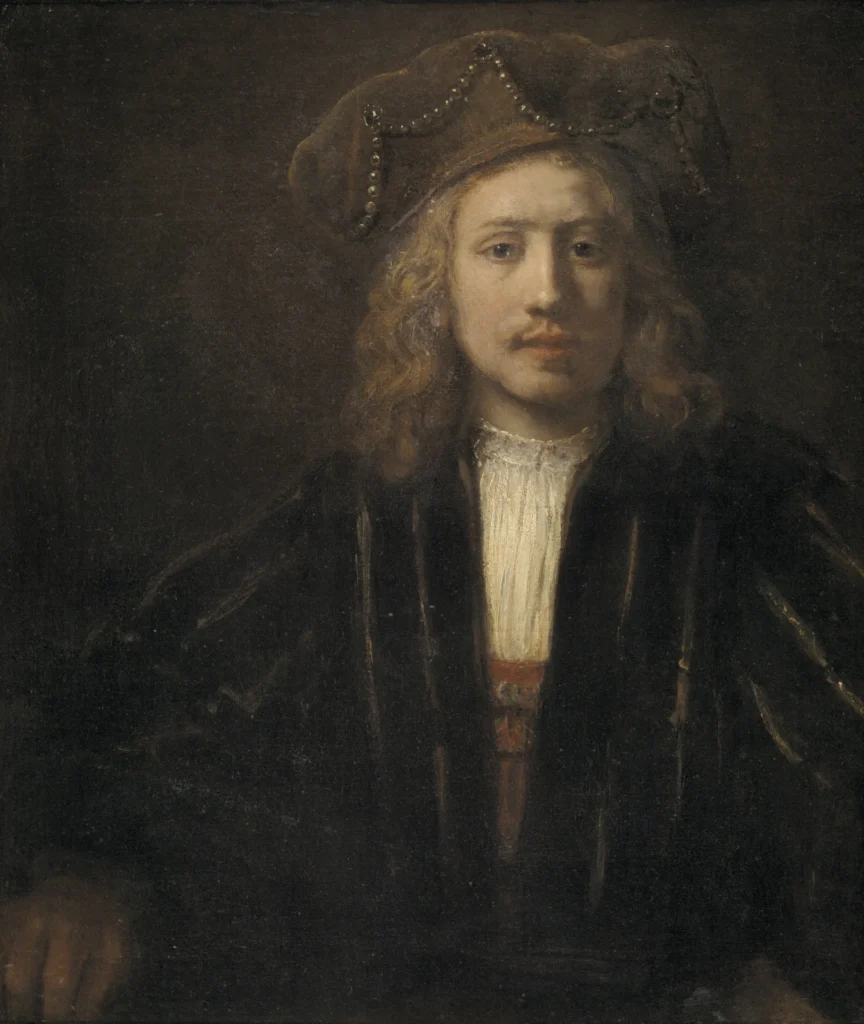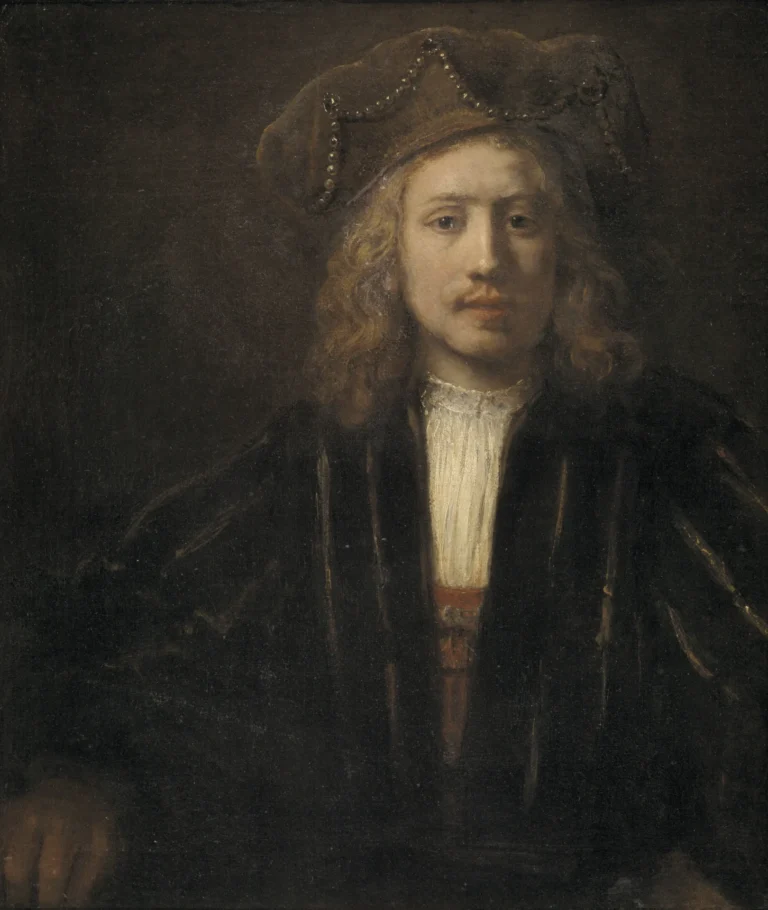Young Man in a Pearl-trimmed Cap
Attributed to the Dutch master Rembrandt van Rijn, Young Man in a Pearl-trimmed Cap is a remarkable painting believed to have been created in the early 1660s. It features a young man adorned with a pearl-trimmed cap, gazing directly at the viewer, exemplifying Rembrandt's signature use of light and shadow. The artwork showcases the artist's mastery of chiaroscuro, creating depth and volume through striking contrasts. Despite ongoing debates about its authorship, this piece remains a valued representation of the Dutch Golden Age, reflecting the era's artistic emphasis on realism and emotional depth.
Early 1660s
About the Artwork
The story of Young Man in a Pearl-trimmed Cap is steeped in the rich tapestry of the Dutch Golden Age, a time when artists flourished and portraiture became a prominent genre. This painting, believed to be crafted in the early 1660s, is a mesmerizing exploration of identity and character. The subject's direct gaze, coupled with the exquisite detail of his pearl-trimmed cap, invites viewers into a moment of intimacy and intrigue. Rembrandt's groundbreaking technique of chiaroscuro—the dramatic interplay of light and shadow—illuminates the young man while casting a mysteriously dark background, a hallmark of Rembrandt's style. The attribution debate surrounding this work only enhances its allure, as art historians continue to explore the nuances of its origin, evoking discussions about artistic mastery and the nature of authorship itself.
Did You Know
Despite being attributed to Rembrandt, some scholars argue that the painting may be the work of his students or contemporaries, leading to ongoing discussions about the nature of artistic identity.
Rembrandt’s use of chiaroscuro in this painting exemplifies his ability to imbue his subjects with a three-dimensional quality, enhancing the emotional impact of the portrait.
This painting reflects the significance of portraiture in Dutch culture during the 17th century, emphasizing personal identity and the status of individuals within society.










